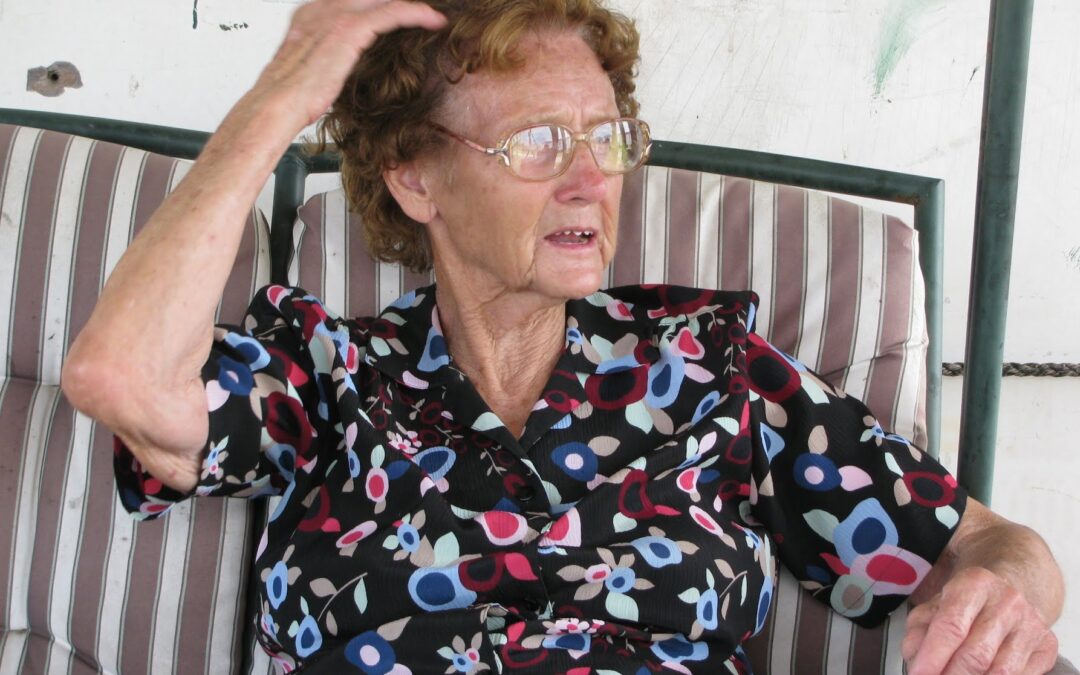
by Lance Hill | Dec 29, 2024 | How To, Mirliton
I learned of a large mirliton farm in Cut Off, Louisiana, in 2009 and traveled there to meet its owner, Vivian Danos Arceneaux. I learned it had been grown for decades and after examining the variety, I told her I wanted to give it a name to help preserve and popularize it. Miss Vivian decided on the name “Papa Sylvest” in honor of her father, Sylvester Antoine Danos, Sr (1901-1998), who planted the first seed at their farm.
Miss Vivian is a mirliton grower extraordinaire. She had grown mirlitons for more than 60 years and had hundreds of feet of trellis and an advanced drainage system. She willingly shared her vast knowledge of the art of mirliton growing with me and donated several dozen Papa Sylvest sprouts to Mirliton.Org for other growers.
Miss Vivian retired from farming but is still alive and active in 2024 at the age of 97 years old in Lafourche Parish. Her nephew, Alvin “Butch” Orgeron, has kept the variety going with his enormous trellis in Thibodaux and is responsible for almost all the Papa Sylvest vines you see today in Louisiana.

Miss Vivian on her porch on the farm, 2010

Papa Sylvest Trellis
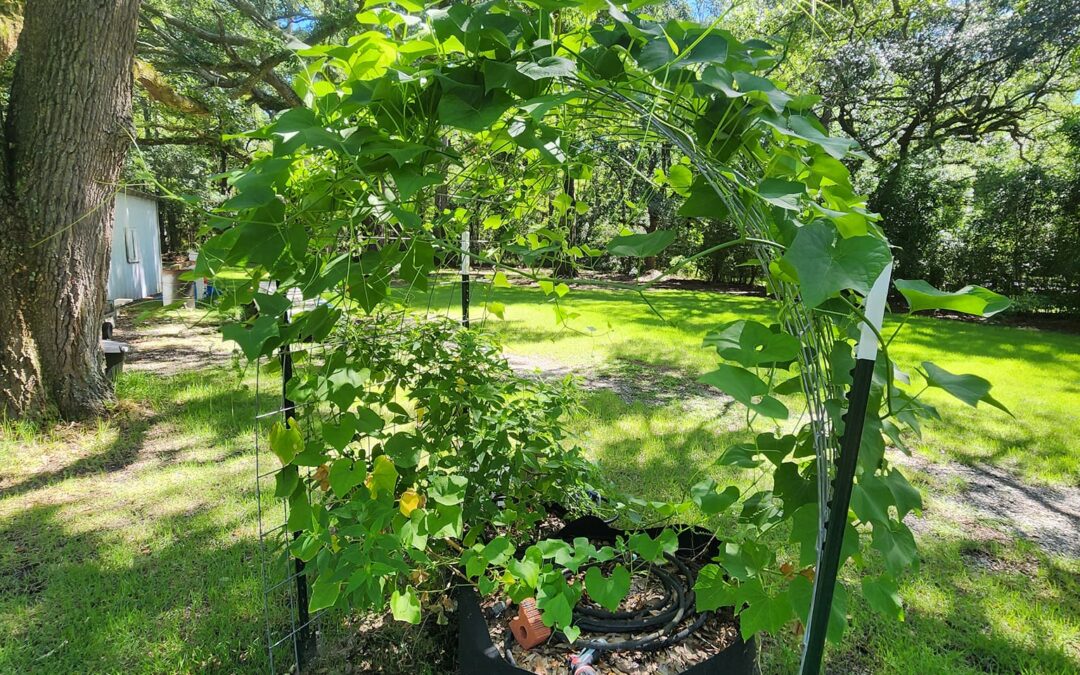
by Lance Hill | Nov 11, 2024 | How To, Mirliton
Mitchell Thomas had poor soil that does not drain well–and that’s bad news for mirlitons whose roots need to breathe. So, he developed a method of growing them in fabric “grow bags.” He and others have gotten small crops with this technique. It enables you to grow mirlitons even if you don’t have a yard: on patios, driveways, and balconies!
If you have drainage problems or no garden space–or need to relocate your vine to some shade, grow bags may be a solution.
If you want to learn how go to the Mirliton.Org Facebook group and post a question.
by Lance Hill | Oct 20, 2024 | How To, Mirliton
 We have a problem.
We have a problem.
Anyone growing mirlitons for the past few years knows that if the heat waves don’t get your vines, the hurricanes will. The weather has changed, and the forecast is that it will only get worse- more heat waves and hurricanes.
But we have a solution. We have the perfect six-month season free of heat and hurricanes: November through April. Why not take advantage of it? It’s possible for you to get three crops in those six cool months: fall, winter, and spring!
You can plant your sprouts in the fall and let them grow on a small trellis throughout the winter. You can easily protect it from those few frost/freeze nights by temporarily tenting it with a tarp or plastic and adding a heating element. It’s additional work, but you will get a spring crop and head into the summer with a healthy vine with a good root structure. A strong, mature vine like that can make it through summer heat domes and you may even get a second fall crop.
Cool, ain’t it?
You don’t need anything fancy to cool-season grow mirlitons. Just a tarp or plastic to throw over the vine and a small space heater to keep the temperature inside the enclosure above 32℉. I use an inexpensive remote thermometer to monitor the temperature. If you use clear plastic, you can leave the enclosure up all winter and open up the sides on warm days to allow pollinators to access the vine.
As always, you will need a certified Louisiana heirloom mirliton to ensure success.
Even if you don’t attempt to grow year-round, the cool-season method will help you extend the fall season well beyond the normal frost date.
Here are the tools I use for cool-season planting:
Tarp or 6-mil plastic sheeting
Portable Heater (electric, propane, or heat lamp)
Wireless Remote Thermometer (click to view)
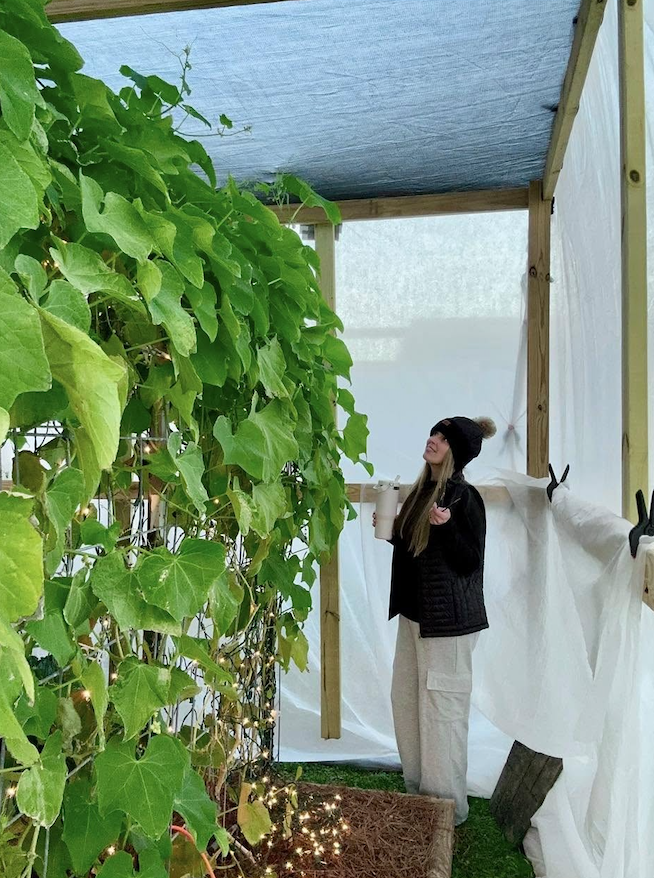
Michelle Glore inside her tented vine after the 2025 deep freeze and 10″ of snow.
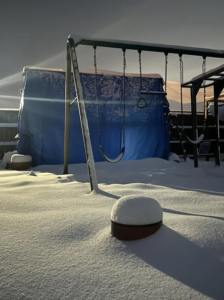
Michelle Glore’s trellised and tented vine in the 2025 blizzard
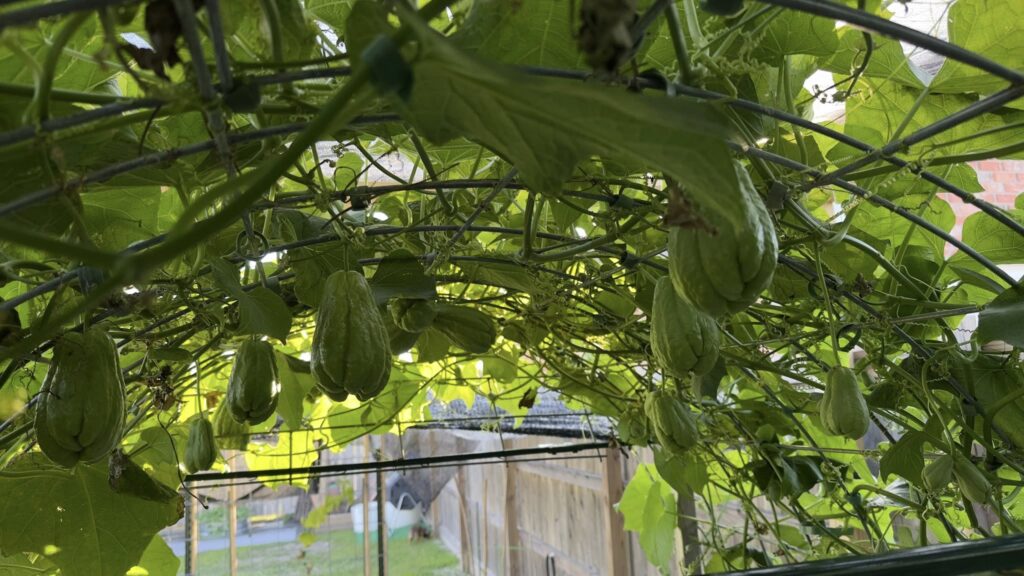
Michelle’s winter mirliton crop is ready to harvest in early April.
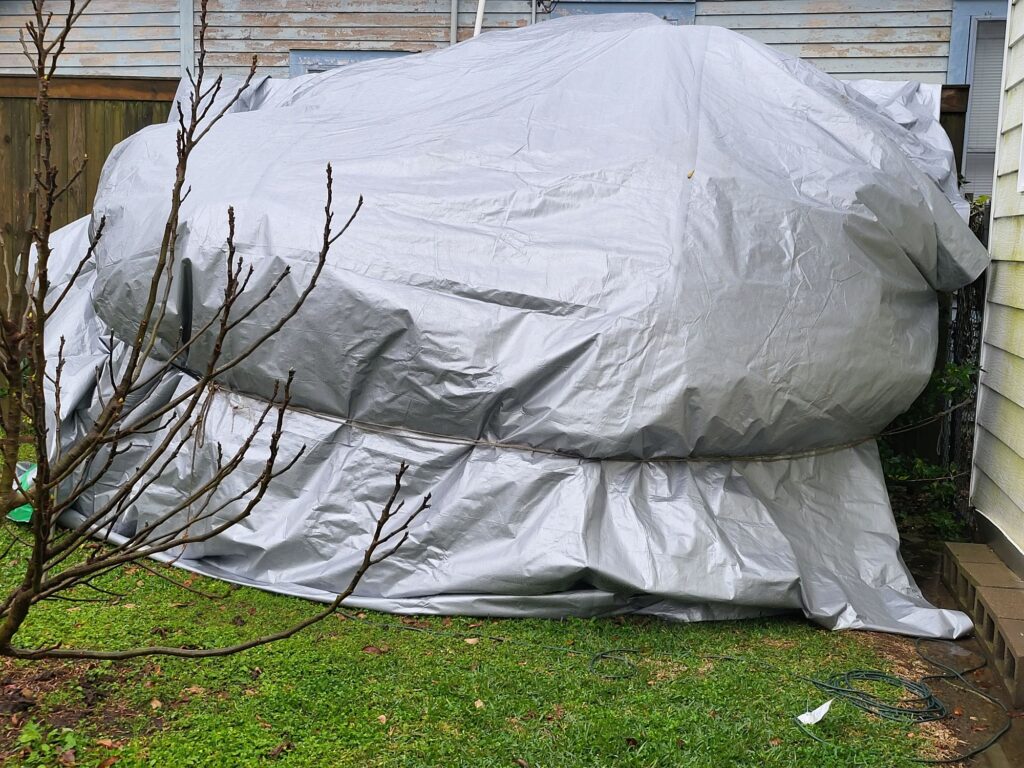
Melissa Minevielle’s tented vine with a heater.
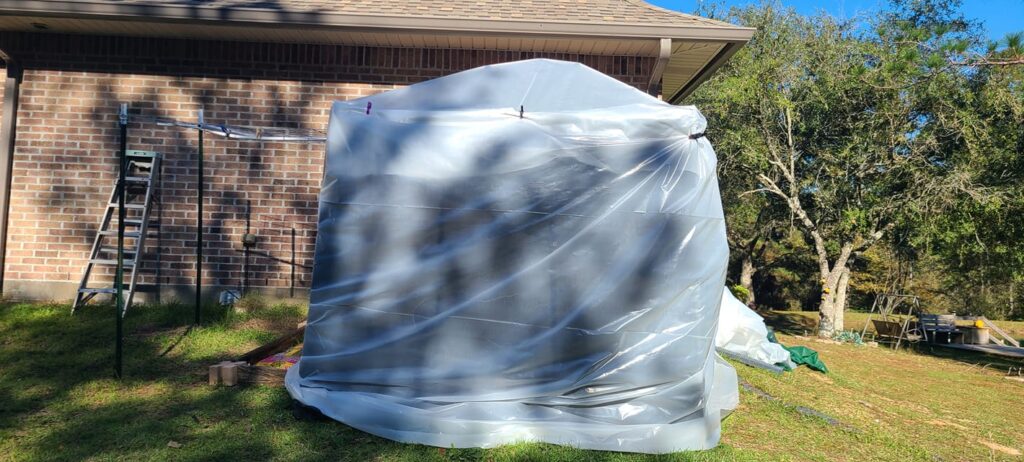
Deb Sepulveda’s tented vine before the freeze.
by Lance Hill | Jul 1, 2024 | How To, Mirliton
Here’s a proven method of planting a spring sprout that you got too late for ground planting. Homer Baham told us about this simple method of container planting the mirliton for the summer and transplanting it into the ground in the fall. Then he mulches it for the winter and it comes back and produces a spring crop. Here’s what Homer writes:
“I have successfully done this many times, including last year after losing my 6-year-old vines in the heat dome. You should plant the sprouts in two-gallon pots and let them root and grow in the pots throughout the summer (they can be pruned back if necessary). After the 1st of September when the worst of the summer heat is over, plant them into a prepared raised bed garden or your garden. After they get over the transplant shock (1 to 2 weeks), they will start growing.
Feed them weekly with water-soluble miracle grow. Let them grow and vine wherever they will (you can use a tomato cage if necessary). They should show prolific growth. You will not get a fall crop but may see flowering. This allows the plants to establish a good root system. Before the first predicted fall frost, cut them back to 4 to 6 inches and cover them with 12-14 inches of leaves. ( I put an inverted plastic flower pot over them so I can find them later without damaging them).
In January when we start getting warm days, uncover them and expose them to the sun and warm weather. Water them and feed them with Miracle-Gro. Be prepared to cover them back up in the event of frost or freeze but leave them exposed as long as no frost or freeze. You should see growth very soon. Let them vine and grow, caring for them as normal with regular feedings and adequate water. Stop feeding the plant in April and you see them flowering and setting fruit by May.
I have never missed getting some spring crop when I follow this procedure!”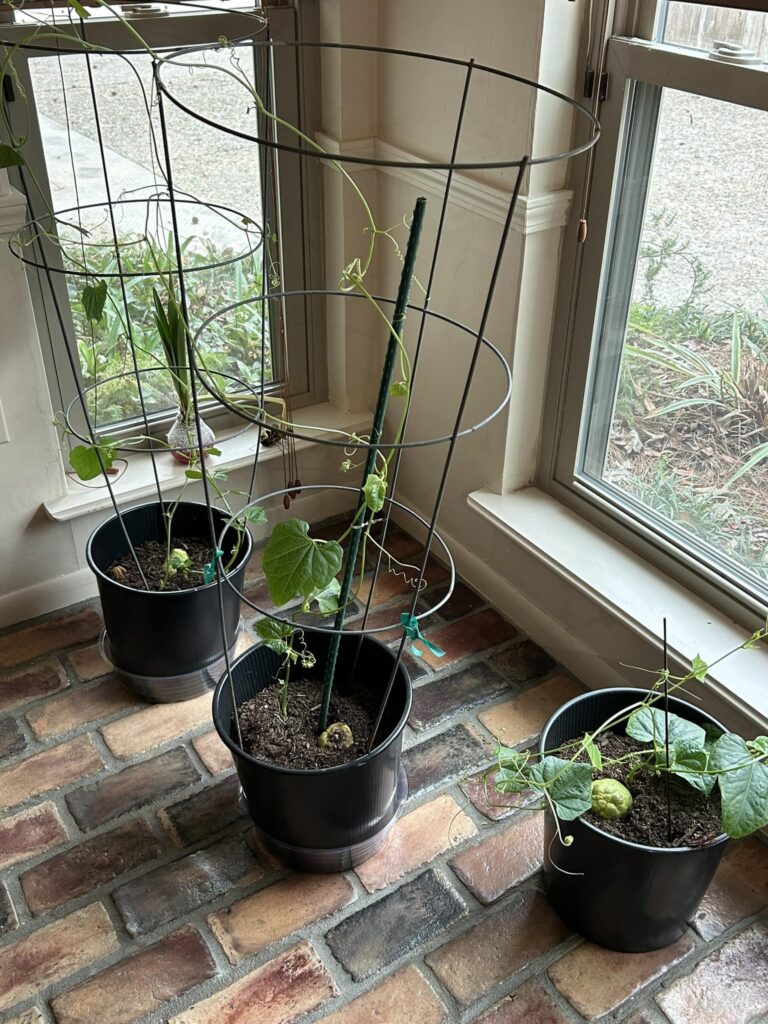
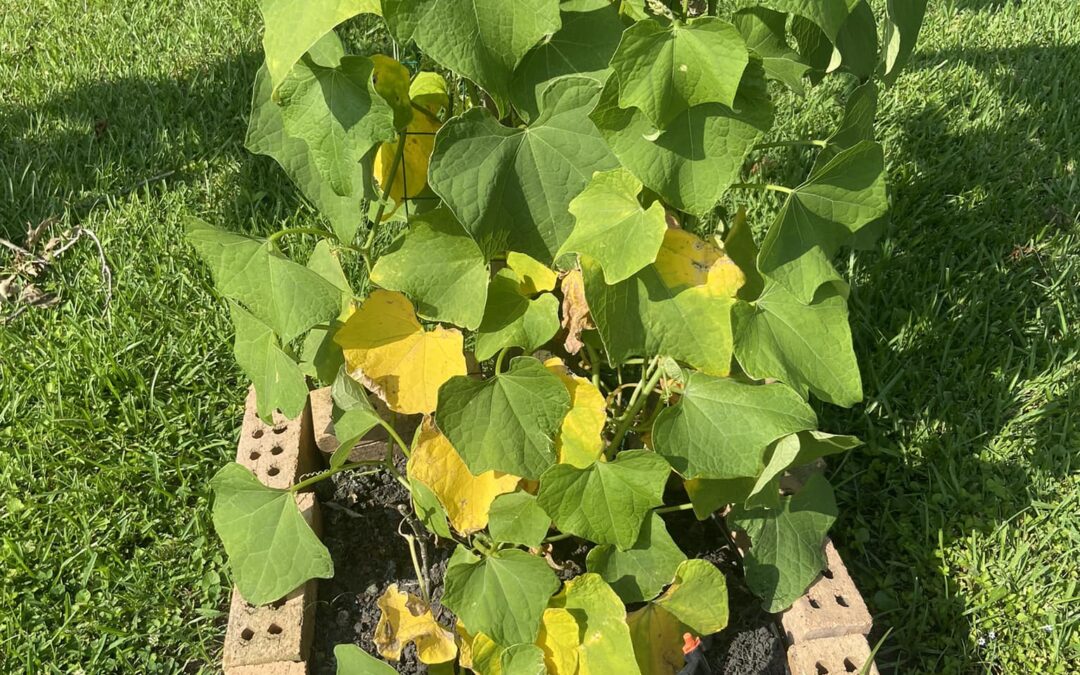
by Lance Hill | Jun 9, 2024 | How To, Mirliton
Yellowing of a few leaves on a mirliton vine is normal and not necessarily caused by anything the grower did wriong. It’s usually caused by the stress of widely fluctuating soil moisture–intensive rains and droughts. You can’t control rain. Adding fertilizers won’t help and may hinder.
Yellowing of the bottom leaves on mature plants is another matter. It can happen because fungus splashes up from the soil and causes anthracnose disease. If the yellowing begins to move up the vine, it’s probably anthracnose. But there is nothing you can do to prevent that. There is no known preventative or cure for anthracnose. The fungus that causes it is in your soil all the time. The disease tends to flare up in hot, wet months, like August, but the vines usually recover by the fall. The good news is that each time your vine gets anthracnose, it will also develop increased immunity to the disease. So, an old plant is a healthy plant.
The main thing you can do to prevent disease is not over-water or under-water the vine—and the best way to avoid this is to test soil moisture with a soil sampler. Of course, you can grow a healthy mirliton without testing and knowing your soil moisture. But knowing your soil moisturel increase the odds of success in your favor.
Finally, should you remove the yellow leaves? Some people do and some don’t. I know of no scientific study about the benefits of removing the leaves. But if you think it helps, then prune off the dead leaves.
by Lance Hill | Apr 17, 2024 | How To, Mirliton
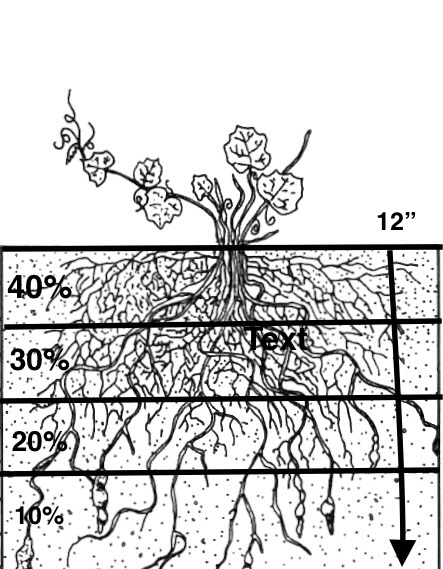
Mirliton Root Structure: The roots extend about 12” deep. This diagram shows water uptake in increments of 4″ and you can see that 70% of the water uptake occurs in the top 8″. There are shallow, superficial roots that extend laterally for up to 6 feet, but they only uptake a small percentage of moisture and nutrients.
_________________




 We have a problem.
We have a problem.







Recent Comments